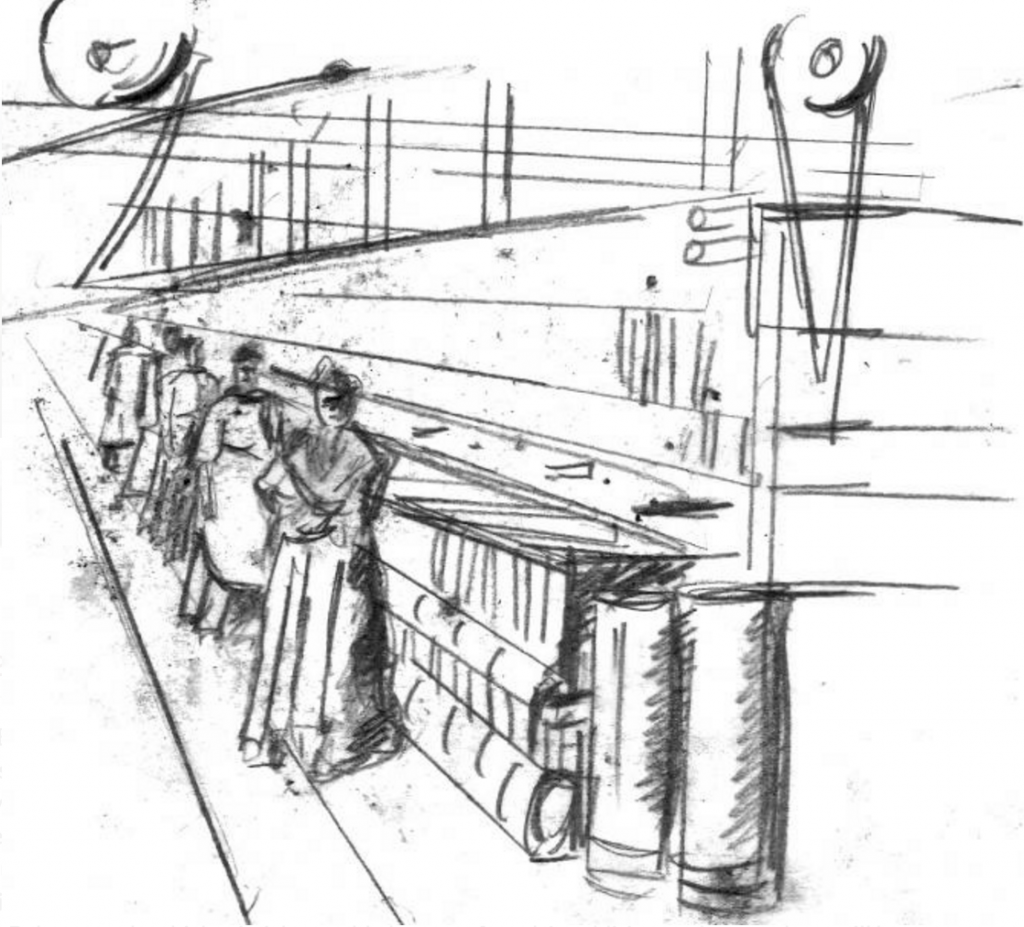If you’ve ever been involved in a public mural project, then you know how deceptively simple this booming genre of community activism can seem, to the uninitiated. Hire an artist, slap it on, make it pretty… right?
Wrong! Community murals are very, very labor-intensive – even if a professional artist is on the team. From fundraising, to power-washing the wall, to the complexities of designing and mapping such a large image, to scaffolding, to selecting climate-appropriate paint, to coating it all with UV protection at the end, to lighting installation, to protecting the work from graffiti, this kind of job is no cakewalk. But it’s worth it. Murals bring people together. Neighbors stop and look, and wind up chatting. Mural helpers and contributors across the country burst with pride at the sight of their work.

Three Points for history
Just ask Jennifer Chappell, who in her free time works tirelessly on her community council and as a Creator with Three Points Beautification, in Louisville. She’s spearheading an ioby campaign that’s raising money right now to cover a portion of costs for a new mural on a run-down commercial building on Goss Avenue, in Louisville’s Three Points area, where she lives.
“This is a building that most people just look over,” says Chappell, “or if they do notice it, it’s just absolutely ugly. A lot of people think that it’s actually an abandoned building, or don’t know what’s in it. So it’s exciting for us to show what’s in the neighborhood, and to say: this is who your neighbors are.”
The mural’s concept is absolutely fascinating: it’s going to visually represent the Louisville Cotton Mill and Glassner’s Bakery – tenants of the building generations ago – as well as Ackerman Millworks, who are the current building tenants. It’ll be done by artist Stephen Paulovich, and in such a way that if you stand out front, it’ll look as if the building has been spliced down the center, so that you can peer right in to see women spinning cotton, men working wood lathes, and bakers kneading bread. On another side will be a reproduction of an old photograph of a Glassner’s Bakery truck.
“We’re seeing a lot of growth right now,” says Chappell. “Nine new restaurants in the area, a lot of businesses coming in, home prices skyrocketing. We’re seeing a lot of positive growth. A lot more people are coming to community meetings. But as we make these leaps and bounds into our future, we want to preserve the past.”
Warning: community action may be highly addictive
This isn’t Chappell’s first rodeo – she and her team already have one other mural up in the area, as well as a community map of three neighborhoods that make up Three Points, a community bulletin board, a bench, a trash can, and some no littering signs. They’ve had sidewalks repaved, done $2,000 worth of landscaping, and planted 4 trees. “It’s a project that continues to grow and grow and grow,” says Chappell, who doesn’t seem to be able to quit. “My heart gets a little warmer if I see someone sitting on the bench. I get really excited over a full trashcan. It’s the little things. I get really excited when someone posts a flier on the bulletin board. It could be about those silly belly wraps that people do – lose 20 pounds with a wrap! That’s ridiculous, but I’m so glad someone took time out of their day to put something on the board!”

Maybe Chappell’s tirelessness comes from seeing so clearly what a difference her work is making. Passersby often roll down their windows and shout “thank you!,” if workers happen to be on the site. “It’s so heartwarming,” says Chappell, who actually cried the first time she sat down in the newly installed bench, and who’s also noticed that neighbors have been taking it upon themselves to quietly contribute, when no one is looking. Recently, someone went and repainted an old fire hydrant in the area; now it’s a nice, bright red again. Someone else staked a tree that had been bumped by a car. Another person did some quiet weed-management.
These selfless neighbors, like Chappell herself, aren’t getting paid for it. They’re not in it for the glory. They just feel compelled to give a little, make things a little nicer. Neighborhood investment breeding neighborhood investment.
To donate to the mural, visit the campaign page here. More than $3,000 has already been raised, with 26 days left to raise the remaining $2,135. A $20 donation gets your name on the mural, and $200 or more gets your glowing FACE up there!
Feeling inspired? Want to take action in YOUR neighborhood? If you have awesome ideas about how to make your town greener, safer, and more fun, let us help! Tell us your awesome idea right here. We’d love to help you get started today.
Pssst…. In OTHER ioby news: Want to learn from the pros about how to bring healthy cooking into the classroom? Check out last week’s Learn From A Leader blog, and get tips on designing curriculum, getting equipment, and teaching good food habits. Give it a read, and you’ll be ready to start!


